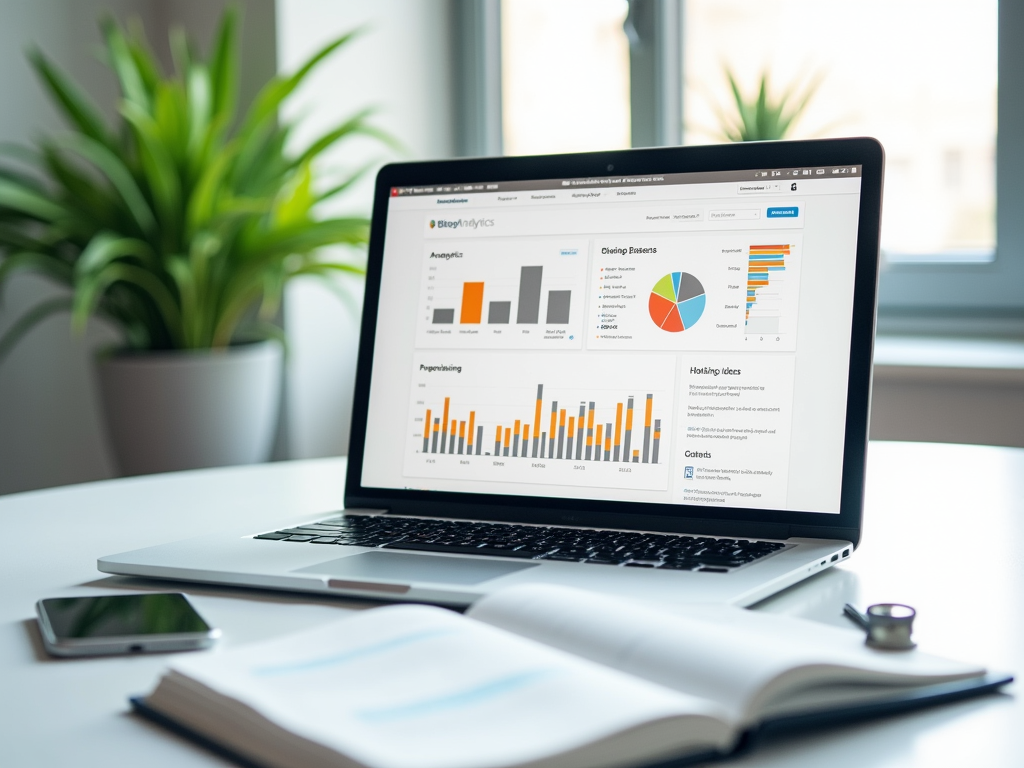In today’s digital landscape, blogs are not just platforms for sharing thoughts; they are powerful tools that can significantly boost your website’s organic traffic. Understanding how to leverage a blog effectively requires a strategic approach that intertwines quality content with the various technical aspects of SEO. It’s more than just posting articles and hoping for the best; it’s about creating a roadmap that leads readers to your site through organic search results. Engaging with your audience authentically through purposeful content can set you apart from your competitors. By utilizing proven tactics and tools, you can transform your blog into a magnet for visitors, stimulating both traffic and engagement. Let’s delve into how you can achieve this and explore actionable insights to drive organic traffic to your blog.
Understanding the Basics of Organic Traffic

Organic traffic refers to visitors who find your website through unpaid search results, making it essential to grasp how search engines operate and the pivotal role of SEO in this ecosystem. SEO, which stands for Search Engine Optimization, is a multifaceted practice that involves enhancing your site’s visibility in search results. This optimization can encompass various elements including keyword research, creating high-quality content, improving site performance, and building backlinks. Moreover, understanding the importance of high-quality content cannot be overstated. Engaging and relevant content helps establish authority within your niche and fosters trust among your audience, leading to higher retention rates. Through these approaches, your blog becomes a valuable resource that not only attracts visitors but keeps them coming back.
SEO is the art and science of increasing your website’s visibility in search engine results pages (SERPs). It involves a blend of both technical and creative elements aimed at improving rankings, driving traffic, and increasing awareness of your brand. To effectively optimize your blog, you’ll need a firm grasp of its components: keyword optimization, link building, and content quality. Each element plays a crucial role in how search engines index and rank your content. For example, keywords must be strategically placed within your content to maximize discovery without compromising readability. By weaving these aspects seamlessly into your strategy, your blog can achieve higher visibility and enhanced organic traffic.
Choosing the Right Topics for Your Blog

Selecting the perfect topics for your blog posts is a fundamental step towards producing relevant and engaging content. Understanding what resonates with your audience means you’ll be more equipped to create posts that drive organic traffic. One of the most effective ways to uncover these topics is through keyword research. Tools like Google Keyword Planner, SEMrush, and Ahrefs can provide insights into the queries your target audience is searching for. Also, you should not limit your creativity solely to popular keywords; consider long-tail keywords as they often have less competition, allowing you to rank more easily. Ultimately, when you blend keyword research with your unique insights and experiences, you lay the groundwork for a blog that not only attracts traffic but fosters meaningful connections with your audience.
Utilizing Keyword Research
Keyword research is crucial in identifying the topics your prospective audience is interested in. By using tools such as Google Keyword Planner, SEMrush, or Ahrefs, you can define a list of keywords that fit your niche. Here’s how you can leverage this information:
- Identify high-volume, low-competition keywords.
- Focus on long-tail keywords that reflect search intent.
- Experiment with variations and synonyms to expand your topic list.
Analyzing Competitors
Researching what your competitors are doing can yield fascinating insights that inform your content strategy effectively. Investigate the hottest topics in your niche and analyze which ones are working for others. You can easily glean valuable information by examining:
- Blog post titles and formats that capture attention.
- The frequency of their postings and user engagement levels.
- Common themes that form the backbone of their strategy.
| Competitor | Popular Topics | Content Strategy |
|---|---|---|
| Competitor A | SEO Basics, Marketing Tips | Weekly Posts |
| Competitor B | Content Creation, Brand Strategy | Bi-Weekly Posts |
| Competitor C | Social Media, Analytics | Monthly Posts |
Optimizing Blog Posts for SEO
After you’ve identified relevant topics and written your posts, the next step is to optimize them for search engines. This step is critical in enhancing the visibility of your articles and increasing organic traffic. Crafting SEO-friendly titles and meta descriptions is one of your first steps. Ensure your titles are compelling and feature relevant keywords to grab the reader’s attention. Additionally, your meta descriptions should succinctly summarize the content while enticing searchers to click through. Another essential aspect is incorporating both internal and external links. By linking to related blog posts within your site, you not only improve user experience but also boost the SEO ranking of your articles. External links, on the other hand, help establish credibility and authority by referencing reputable sources.
Adding links to both your internal articles and reputable external sources is not just beneficial for SEO; it enhances the overall user experience. Here are the best practices for using links:
- Link to related articles within your blog to keep readers engaged.
- Use reputable external sources to back up your claims and provide additional value.
- Ensure all links open in a new tab to keep users on your site while exploring.
Promoting Your Blog Content
Creating valuable content is only half the battle; the other half is effectively promoting it. Utilizing social media platforms is a powerful way to reach a broader audience. Share your blog posts across your social channels and engage with your followers to increase visibility. Don’t forget to capitalize on relevant hashtags that can expand your reach. Another effective strategy is email marketing. By building an email subscriber list, you can inform your audience about new posts and drive them back to your website. Regular newsletters featuring your latest content can re-engage past visitors and attract new traffic.
Measuring the Success of Your Blog
Once your blog is up and running, tracking its performance is vital to understanding what works and what doesn’t. Utilization of Google Analytics is key to gaining insights into how visitors are discovering and interacting with your content. This powerful tool allows you to monitor various metrics such as page views, bounce rate, and average session duration. Each of these metrics gives you valuable information regarding user behavior. You can adjust your strategy accordingly, focusing on areas that need improvement and enhancing content that is already performing well.
To measure the effectiveness of your blog posts accurately, focus on these specific key metrics:
- Page Views: Indicates the popularity of each post.
- Bounce Rate: Reflects the percentage of visitors who leave without interacting.
- Average Session Duration: Measures how long visitors stay on your site, indicating content engagement.
Conclusion
Using a blog to increase organic traffic requires a combination of strategic content creation, thoughtful SEO optimization, and effective promotion. By focusing on high-quality, engaging content tailored to the needs of your audience, you establish your blog as a valuable resource. Employing tools for keyword research and competitor analysis allows you to discover untapped opportunities, while optimization techniques ensure your content is visible in search results. Regular promotion through social media and email lists maintains interest and encourages clicks, driving traffic back to your site. Ultimately, understanding performance metrics facilitates continuous improvement and helps you refine your strategies to maximize organic traffic.
Frequently Asked Questions
- What is organic traffic? Organic traffic refers to visitors who discover and visit your website through unpaid search results.
- Why is blogging important for SEO? Blogging helps create fresh content, which is crucial for improving your site’s visibility in search results, as search engines prioritize sites with updated, relevant content.
- How often should I post on my blog? While there isn’t a one-size-fits-all answer, consistency is key. Aim for a regular schedule that you can maintain, whether that’s weekly, bi-weekly, or monthly.
- What should I do if my blog isn’t getting traffic? Reevaluate your content strategy, perform keyword research, enhance your SEO efforts, and promote your posts through social media and email marketing.
- Can I use images and videos in my blog posts? Absolutely! Visual content can enhance user engagement and contribute positively to SEO, as long as you optimize images with proper alt text.
